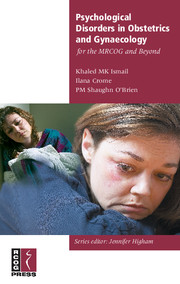Book contents
- Frontmatter
- Contents
- Abbreviations
- Introduction
- 1 Diagnosis and management of psychological problems
- 2 Basic science
- 3 The menarche
- 4 The menstrual cycle
- 5 Psychological aspects of infertility and its management
- 6 Pregnancy and the puerperium
- 7 Eating disorders
- 8 Menopause and perimenopause
- 9 Substance use disorders
- 10 Other disorders
- Further Reading
- National organisations and support groups
- Index
8 - Menopause and perimenopause
Published online by Cambridge University Press: 05 July 2014
- Frontmatter
- Contents
- Abbreviations
- Introduction
- 1 Diagnosis and management of psychological problems
- 2 Basic science
- 3 The menarche
- 4 The menstrual cycle
- 5 Psychological aspects of infertility and its management
- 6 Pregnancy and the puerperium
- 7 Eating disorders
- 8 Menopause and perimenopause
- 9 Substance use disorders
- 10 Other disorders
- Further Reading
- National organisations and support groups
- Index
Summary
Introduction
It is estimated that approximately 35% of women will seek medical treatment for symptoms associated with the menopause. The complaints most commonly noted by women include hot flushes, sweats, muscle and joint pain, headaches, weight gain, decreased libido, fatigue, insomnia, low mood and irritability.
Definitions
The World Health Organization defines the menopause as ‘the permanent cessation of menstruation resulting from loss of ovarian follicular activity’. The average age in Western women is 51 years. The perimenopause is defined as the period of time immediately before menopause when endocrinological, biological and clinical features of approaching menopause commence, until the first year after the menopause. The postmenopause is defined as dating from the time of menopause, although the exact date of the menopause cannot be determined until after a period of 12 months of spontaneous amenorrhoea has been observed. Surgical menopause occurs as a result of bilateral oophorectomy, mostly at the time of hysterectomy.
Mood disorders and the menopause
Longitudinal studies have failed to demonstrate an increase in frequency of major depression or severe mood changes in relation to the transition. Some studies, however, suggest that milder mood changes, expressed as decreased wellbeing, are more common after the menopause than before; data in this field are not consistent.
- Type
- Chapter
- Information
- Publisher: Cambridge University PressPrint publication year: 2006



